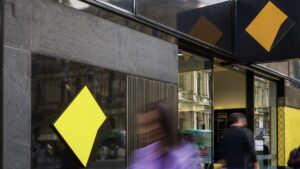Stockspot’s Chris Brycki has four problems with the rise of thematic ETFs

Pic:Getty Images
Exchange Traded Funds (ETFs) offer diversification at a low cost. However, with more being launched tied to popular themes from the environment to cryptocurrency, investors are being warned to approach thematic ETFs with caution.
Stockspot founder and CEO Chris Brycki told Stockhead thematic ETFs are often created following the rise of popular investing themes.
But he warned past performance is not always an indicator of future performance. The theme may be tiring when the ETF hits the market and it may have ran out of the steam to race hard.
So tied to a hair analogy, while the pixie-mullet combo (aka the mixie) is fast becoming the haircut of 2022, will it really last? And is it worth the hassle of growing it out when you start wondering ‘what was I thinking’?
Stockspot is an online investment advisor which builds custom portfolios using ETFs. Brycki said ETFs used to be simple, low-cost listed funds which were weighted based on the market cap and gave you broad exposure.
An investor may have the most in CBA and BHP and it would trickle down to number 300 for example in an ETF capturing the ASX 300.
“The big evolution of the industry is of all those ETFs (that) got created 10 plus years ago and there’s not much space for new entrants into that area,” he said.
The rise of thematic ETFs
Brycki said many of the ETFs now being created are finding niches where they might not find as much money but their fees can be higher and can still earn money for their providers.
“What tends to happen with these thematic ETFs – and it’s not just Australia but around the world – is that the timing of when they are launched aligns perfectly with when the retail interest in that sector is at its peak,” he said.
“The reason for that is the ETF issuers commercially want to offer products they think they can get good assets under management in and pay themselves and when they survey what people are interested in it tends to be what has done well recently.”
He said a lot of focus goes into the recent past, so it explains for example, why a lot of ETFs over the last three or four years have been technology focused and more recently, hydrogen energy or batteries.
“It is not because these are new or emerging themes but because they are well-known with a lot of money chasing and these ETF issuers are capitalising on heightened interest,” he said.
What goes up must come down
Brycki said markets tend to revert to the mean over time and sectors which do well over a period due to various reasons will have times of under-performance.
“In my eight years of tracking ETFs it seems to always follow the pattern that a bunch of ETFs which will list following a certain thematic will be very close to the peak of that sector performing well before having a period of under-performance,” he said.
“We saw it in 2015 when there was a whole bunch of dividend-focused ETFs performing well and it was when value stocks and dividends were doing well in our sharemarket.
“It just happened to be the peak of that theme doing well and then for the next five years dividend stocks did very badly.”
He said thematic ETFs that may have come out recently focused on sectors which might be successful over 20 years probably won’t do well over the next three or five years.
“Everyone already knows about them, there’s already a lot of money chasing them and returns have already been made in those areas,” he said.
Brycki said this is supported by various research which has shown that the peak of their relative performance is six months before they list.
“The peak of their relative performance is when the ETF manufacturer decides they want to launch it and the interest is very high,” he said.
“It takes six months to get an ETF to market so by the time they launch they are already on the downward trend of performance.”
He said they may have lots of money flowing in and hype on the first day of listing before investors become disappointed over the next few years.
“Definitely some of the ETFs which have done quite badly over the last three to six months have been these thematic ETFs.”
$100m lost to thematic ETFs in past year
In their annual ETF research report which is yet to be released, Stockspot has found big money has been lost in the past year from newly launched ETFs.
“We found that around $100 million in the last 12 months from these newly launched thematic ETFs has been lost,” Brycki said.
“A lot of investors aren’t aware that a lot of thematic ETFs shut down if they don’t get a lot of assets in them or lose assets.
“The best timing to buy a thematic ETF would be when it shuts down, as that’s when no-one is interested and from a contrarian perspective the potential for returns is more in favour of the investor.”
He said a few years ago a small cap resources ETF shut down because of lack of interest and resources shares were not doing well.
“For the 12 months after that ETF shut down it would have been an awesome time to own it but you couldn’t because it was shut down,” he said.
Brycki said the old Wall Street saying of “feed the ducks while they’re quacking” applies to ETFs.
“You feed the investors what they want but it’s not really the right thing for them to be eating. So Stockspot is an advisor and we’re like a doctor, so have to prescribe the right medication and that is not always what is the most popular,” he said.
“We try to temper our clients’ excitement around thematic ETFs by providing evidence and explaining the reason you probably want to buy it is fear of missing out and you’ve heard there’s good returns. But that’s exactly why you should be avoiding them.”
Stockspot calls for review of use of term ETF
Stockspot has put in a submission to ASIC around the naming conventions of different ETF products. It’s concerned four particular areas make it difficult for investors to understand the differences, including:
1. Open-ended or closed-ended
He said an open-ended product is what a typical ETF would be where there is a redemption and creation process without a fixed number of units.
“Why that’s important is because if there is a redemption and creation process an ETF will usually track very closely its net tangible assets,” Brycki said.
“One of the big problems of listed investment companies is they often trade at a big discount to their NTA because there isn’t a redemption and creation process and they are closed end funds.”
Brycki said only open-ended funds should be able to use the term ETF.
2. Rules-based or non-rules-based
Brycki said a rules-based product has different rules for what qualifies a stock to be included in an ETF, eliminating human decision-making process about what can go in or out.
“It’s not active and we think that actively managed ETFs shouldn’t be able to use the term ETF as they are just an active listed fund,” Brycki said.
“In order to be an ETF is should be rules-based, so for example an ASX 300 ETF uses the rules which determine the ASX 300 to work out what companies are included.”
3. Transparent or non-transparent
Non-transparent means the ETF does not disclose the underlying holdings or does so with a long time delay, whereas transparent does disclose what is included.
“We think in order to be an ETF a product should be transparent and disclose underlying holdings,” Brycki said.
“This means an investor understands the underlying holdings and exposure they’re buying into.”
4. Use of leverage and derivatives
Brycki said an ETF shouldn’t be able to use leverage or derivatives and should have to own the underlying asset. He said an example are ETFs which track commodities. While the commodity may increase, the ETF may fall because it uses what is a synthetic swap agreement to get exposure.
He said while some commodity ETFs like gold will hold the actual commodity, others won’t because there may be a big cost or risk.
“Holding thousands of barrels of oil is expensive or soft commodities like wheat are hard to store, so instead an ETF will buy futures or swaps. The reason this is dangerous is their prices may not reflect the underlying price currently,” he said.
“In extreme and rare events futures prices can go negative and we saw that with oil on April 20, 2020 when the May oil contract for WTI fell to end the session at negative US$37.63 per barrel on the New York Mercantile Exchange.
“It fell by 306% and was the largest fall since the exchange started in 1983.”
Brycki said investors may wrongly buy an ETF thinking they are getting exposure.
“Instead they are getting exposure to the complex derivative that has very little resemblance to the commodity,” he said.
“We think those sort of products shouldn’t be called ETFs because it’s misleading thinking you are getting a clear representation of the underlying asset.”
Most thematic ETFs would still qualify
Brycki said thematic ETFs generally do tick the four boxes for which he is concerned, with most open-ended, rules-based, transparent and not using leveraging or derivatives.
“These products would still qualify as an ETF based on our definition but it doesn’t necessarily mean it’s good and there still needs to be education,” he said.
“Even if something is technically an ETF it may not be very well diversified or might be in such a small sector you are taking a lot of risk.”
But Brycki said under his proposed criteria there would be some ETFs which would be disqualified and not make the cut.
“There’s a lot of inverse, leveraged, synthetic or active ETFs and they’re all the ones which would be stripped of using the term,” he said.
ETFs remain a solid investment option
Brycki said there is a bit of a misconception that ETFs are only good for beginner investors, but they generally outperform well-educated fund managers.
“Buffett has said people who know everything about markets should still be investing in ETFs because most professionals are still not beating the market,” he said.
“If you look at the largest fund managers in Australia – and S&P put out the data every year – and around 85% or so underperform the market, so you are taking a lot of risk giving money to an active fund manager because fees also take out a big chunk of performance.
Brycki said even managing your own investment the results are not too different because only ~4-6% of companies drive market performance. And if they’re not in your portfolio then it will underpeform.
“Regardless of whether you are the smartest investor in the world or a beginner, ETFs are the right structure and Australia’s are only just beginning to learn this and are probably about five years behind the US on adopting,” he said.
“In the US ETFs as a proportion of the overall market is something like 23% but in Australia it’s still only 4%.”
He forecasts in the next couple of decades there will be a secular trend away from active investing to passive index-based investing.
“A lot of people who got hurt from tech stocks or sectors which have fallen 70 or 80 per cent are going to turn into passive investors because they’ve realised the hard way picking stocks isn’t easy.”
Related Topics
UNLOCK INSIGHTS
Discover the untold stories of emerging ASX stocks.
Daily news and expert analysis, it's free to subscribe.
By proceeding, you confirm you understand that we handle personal information in accordance with our Privacy Policy.








